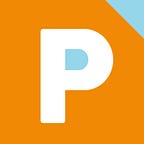SXSW: A Look Back at Some Key Themes From 2015
With SXSW 2016 about to kickoff this week, we thought it’d be worth taking a quick look back at some of last year’s key themes to see how they evolve at this year’s session. We’re particularly interested to see how the Health and MedTech Expo takes shape after its big debut in 2015.
But before we dig in, we’d like to invite you to tag along on this year’s trip down to Austin. Some of our digi-est folks will be live Tweeting and ‘Gram-ing their “South By” experience, so be sure to follow us for updates. We’ll also be posting our annual recap right here on the blog and on Medium. So stay tuned…
Wearables: More Functional & Fashionable
As expected, wearables were back in a big way last year. But compared to what we saw the year before, there was an emphasis on:
*Making wearables more “wear”-able (i.e. more fashionable or form-fitting)
*Extending the product line beyond gadgets and accessories to more “invisible” tech like smart fabrics and textiles
*Broadening their use beyond fitness measures (eg, counting steps)
*Integrating more seamlessly with human behavior
Indicative of this burgeoning category, one health-related wearable that generated a lot of buzz was the MultiSense Memory Sensor (more affectionately called the “Smart BandAid”). During last year’s Ebola outbreak, it was used to monitor patients’ vitals from afar, thereby minimizing the risk of transmission to healthcare providers.
On our radar for 2016: we’re looking to see wearables take another leap forward in how accurately and seamlessly they collect data, as well as how responsive they can be with interpretations of the data.
There-ables, Portables, Ingestibles…
A bed that monitors your sleep.
A light that senses your presence.
A cabinet that reminds you to take your medicine.
It’s not just the things we wear that are becoming smarter and more connected. As we saw last year, elements of our environment (often called “There-ables”) are joining the Internet of Things (IoT) as well.
One health-related example that stood out to us was a “Portable” smart cup called Vessyl. Not only does it have the ability to recognize and analyze the makeup of what you’re drinking, but through a companion app, it can track your intake of things like sugar and caffeine to make recommendations on what you should drink next. Imagine the potential for diabetics or those who suffer from acid reflux.
On our radar for 2016: as was the case with wearables a year ago, we expect to see there-ables explode as the IoT expands its reach into other product categories.
Big Data, Big Undertaking
The more connected we become to wearables, there-ables, and the IoT, the more data we generate. But how should all of that data be interpreted and used? That was a big question about big data at many of last year’s sessions.
From a healthcare standpoint, doctors certainly don’t have time to analyze all of this extra information. They need technology to do the leg work without supplanting their decision-making. We’ve all seen IBM’s Watson talk on TV about how it can analyze millions of health records in a matter of seconds. Well, Watson also made an appearance at SXSW. He even sat in on a panel to talk about revolutionizing evidence-based medicine as a means of advancing personalized medicine.
On our radar for 2016: our collective ability to analyze and interpret big data has always trailed our ability to generate and capture it. This year, we hope that technology helps us catch up.
— -
As we mentioned at the top of the post, these were just a few of the key themes from 2015 that we’re looking to see evolve this year. If you’d like to see our full 2015 report, feel free to e-mail us at EDG@CDMiConnect.com.
